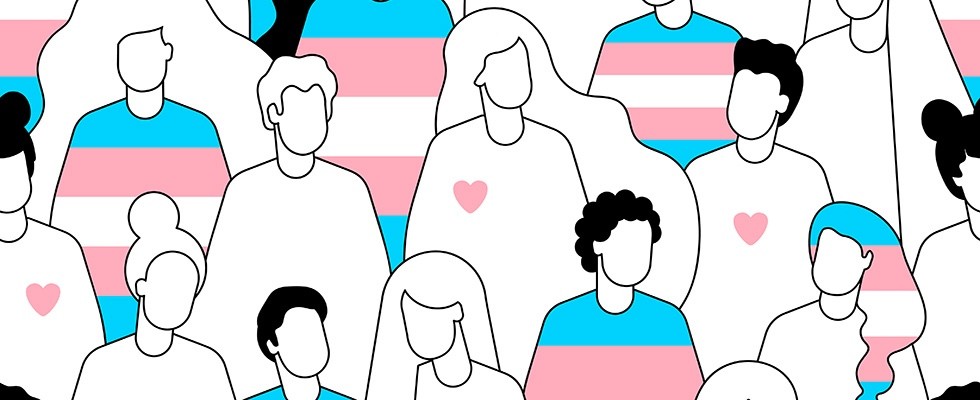
In the homecare and hospice community, our primary focus is on providing quality of life. We strive to provide an experience of care that aligns with the needs and goals of the people we serve. With increased awareness of transgender and other gender-diverse identities in recent years, many of us are exploring how to incorporate gender-affirming principles into our organizations’ care models. The first step is educating ourselves and our teams about the unique social, medical and legal considerations for meeting the needs of this population.
Any discussion of gender-affirming care must begin by acknowledging that social conventions around gender are continually evolving, often in a politically charged context. We are all learning, and we won’t get everything right. The most important point to keep in mind is that each patient is an individual with unique values, preferences and lived experiences.
Understanding Diverse Gender Identities
When we talk about gender-diverse identities, we are typically describing the experiences of individuals with gender dysphoria, meaning that they feel that their gender does not match the sex assigned to them at birth. There are different types of gender dysphoria, including transgender (identifying as male or female) and non-binary (not identifying as one gender over another). Other terms include gender fluid, agender, Two-Spirit, gender queer and pangender. It is also important to differentiate gender identity from sexual orientation. Sexual orientation describes a person’s preferences for intimacy—whom they are attracted to rather than how they identify their gender.
Many individuals with gender dysphoria choose to outwardly transition to the gender identity that matches their internal sense of self. This can take several forms. Social transitioning can include changing one’s clothing, hairstyle and other visual indications of gender, as well as choosing a different name and using different pronouns. Medical transitioning can include hormones to modify secondary sexual characteristics and surgical interventions. The scope of an individual’s transition can vary based on personal preferences and external factors such as access to gender affirming medical care.
Cultivating a Safe & Affirming Experience of Care
Many members of the LGBTQ+ community have faced a lifetime of discrimination and marginalization, but transgender individuals experience even greater obstacles, particularly when it comes to obtaining medical care. This can lead to a profound mistrust of health care providers, so creating a safe and affirming environment is critical from day one. This includes using the patient’s chosen name and pronouns consistently, which affirms their identity and demonstrates the empathy and respect all patients deserve.
It is also important to keep in mind that isolation is a significant concern among elderly transgender individuals. They may lack family support and have a limited social network due to estrangement or societal stigma. Home health and hospice teams can play a crucial role in alleviating this loneliness by providing compassionate companionship and facilitating connections with supportive communities.
Meeting the Unique Medical Needs of Transgender Patients
Individuals who have medically transitioned often have specific medical needs that require careful attention and sensitivity. These patients may be undergoing hormone replacement therapy (HRT), which necessitates regular monitoring and coordination with an endocrinologist.
Understanding the implications of long-term HRT is vital, as it can influence cardiovascular health, bone density and other aspects of medical care. In a hospice context, medication coverage determinations may need special attention. Home health professionals should be knowledgeable about the potential complications and care protocols associated with previous gender-affirming surgeries, particularly when it comes to toileting. Additionally, transgender populations experience higher rates of depression, anxiety and substance misuse, so additional screening and consideration is prudent.
Managing Legal & Administrative Concerns
Working with gender-diverse populations requires special attention when it comes to family dynamics and legal documents. Many patients will depend on caregivers and advocates who are “chosen family” as opposed to biological relatives, but these arrangements are not always codified appropriately. Agency teams should carefully review available medical records, advance directives and power of attorney documents, keeping an eye out for misgendering or inconsistencies regarding names which can lead to significant distress and legal complications.
Best Practices for Home Health & Hospice Providers
Serving gender-diverse patients in home health and hospice settings requires a comprehensive approach that addresses their unique medical, psychosocial and legal needs. By fostering an inclusive environment, providing tailored care and advocating for their rights, agency leaders can significantly enhance the quality of life for their patients. The following best practices are a great place to start:
- Cultural Competence Training: Regular training sessions on transgender issues for all staff members help foster an inclusive and respectful environment.
- Personalized Care Plans: Develop care plans that address the specific medical and psychosocial needs of transgender patients, including considerations for HRT and post-surgical care.
- Legal Documentation: Ensure that all legal documents are accurate and reflect the patient's gender identity and connect patients to appropriate assistance if necessary.
- Open Communication: Maintain open and respectful communication using the patient’s chosen name and pronouns and encouraging discussions about their preferences and needs.
- Support Networks: Facilitate connections with local LGBTQ+ support groups and resources to help combat isolation and provide additional support.
By implementing these practices, home health and hospice providers can create a more inclusive and affirming environment that better serves the needs of gender-diverse patients.
